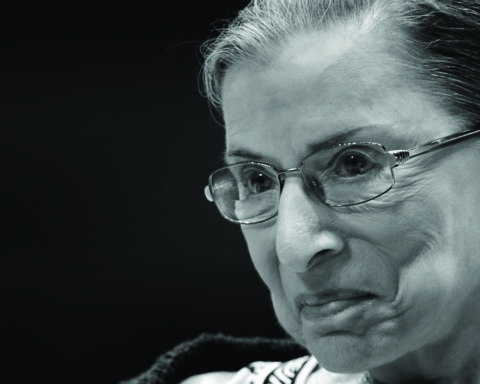By Dominic Gismondi, Contributing Writer
On Saturday, President Donald Trump announced his Supreme Court nomination to replace the recently deceased Justice Ruth Bader Ginsburg. He addressed the nation from the Rose Garden, where he attested to the “unparalleled achievement,” “towering intellect,” “sterling credentials” and “unyielding loyalty to the Constitution” of his appointee, Judge Amy Coney Barrett. Judge Barrett gladly accepted the nomination, saying she would do the job “mindful of who came before me.”
While no one disputes that President Trump is known to overstate his achievements, his statement made on Saturday understates the true value of Judge Barrett being promoted to the highest court in the nation. Judge Barrett currently stands as one of the greatest legal minds today and is more than deserving of this nomination. She is beyond qualified and is certainly the best choice President Trump could have made.
Judge Barrett graduated from Notre Dame Law School in 1997 at the top of her class. She clerked under Justice Antonin Scalia for two years, an experience that she says still informs her legal philosophy to this day. Shortly after her nomination, Barrett spoke about Scalia saying, “His judicial philosophy is mine, too. A judge must apply the law as written. Judges are not policymakers and they must be resolute in setting aside any policy views they might hold.” This is originalism at its core, a legal philosophy pioneered by Justice Scalia in the late 1990’s. It grew as a reaction to the growing trend of “legislating from the bench,” where judges favor partisanship over objective interpretation of the Constitution, ignoring their duty to interpret the law in favor of making their own. She spoke further of originalism in 2016, where she said, “[The Constitution and its Amendments are] the enacted text. It went through the process of ratification of constitutional amendments to become a law, and if we change the law now to comport with our current understanding or what we want it to mean then it ceases to be the law that has democratic legitimacy.”
Opponents to her nomination cite that her view of originalism, which closely sticks to the intended purpose of the Supreme Court, is “dangerous,” and that her judicial policy of ensuring justice, remaining impartial in her decisions and following the law, which she has demonstrated strict adherence to time and time again, may pose a “threat to the Constitution.” Her judicial philosophy as well as her extensive case history prove that such claims are mere political strategy, made by those who want a different judge that will legislate from the bench on their behalf.
She has also taken a hard line to the practice of “stare decisis,” or “to stand by things decided,” where a current court case can be settled primarily because former cases on the subject have ruled the same way. This practice has been widely ridiculed, as it allows cases that were decided with no regard to the Constitution, such as Dred Scott v. Sandford or Plessy v. Ferguson to persist as the law of the land decades longer than they should.
While Judge Barrett does not take as strong a position as Justice Clarence Thomas, who insists that stare decisis no longer be considered a major deciding factor at the Supreme Court level, she has firmly aligned herself against it. In 2013, Barrett wrote an article summarizing her position on stare decisis. She lists several Supreme Court decisions that can be considered “superprecedents,” or cases that are unlikely to ever be overturned. The list notably includes such landmark decisions as Brown v. Board of Education and Mapp v. Ohio, as well as other similarly famous cases. While this stance may have shifted in the following years, it is a good indicator that she sides with the originalist Justices and will consider each case presented with appropriate gravity.
Judge Barrett has also served as a federal judge on the Seventh Circuit. Her nomination was supported by every still-living clerk she had ever worked with, many of whom hold opposing legal philosophies to Barrett, as well as all her forty-nine faculty colleagues at Notre Dame Law School, where she had been teaching law since 2010. In addition, a letter was sent to the Senate Judiciary Committee supporting the nomination, signed by 450 of her former students. She was voted in 11-9 and became the first woman in history to occupy an Indiana seat on the Seventh Circuit.
Judge Barrett is easily the best possible pick for the newly opened seat on the Supreme Court. She is qualified beyond reproach and brings her unique lived experience with the law and with America to the court, being significantly younger than all the currently seated Justices. She will be joining some of the most accomplished judges in history after the Senate confirmation, each as overwhelmingly qualified and well-respected as the last. It was in 2009 that Justice Sotomayor was confirmed by the Senate in a bipartisan vote, mostly for her outstanding qualifications and experience. In 2010, for much the same reason, Justice Kagan was appointed to the Supreme Court in an equally bipartisan vote. I hope that some Senate Democrats will be able to see beyond petty partisanship to recognize such a uniquely qualified candidate in Judge Barrett and back her just as fervently today.
gismondm19@bonaventure.edu








